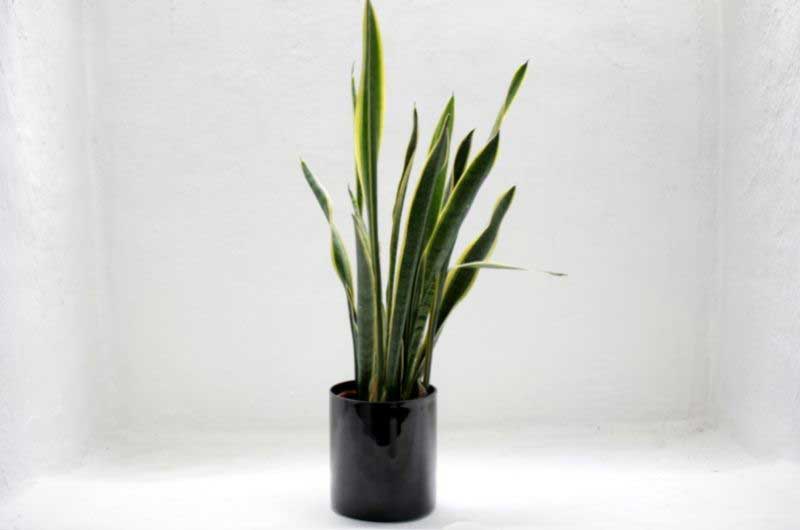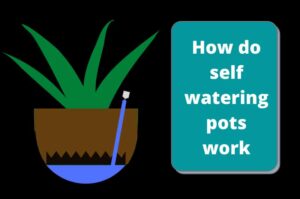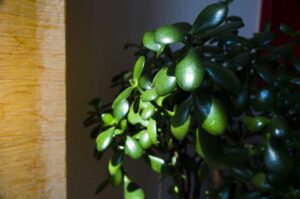Why Is My Snake Plant Not Growing? (Causes and Solutions)
A snake plant, also called “Mother-in-law’s tongue” or Sansevieria is one of the most convenient plants to have. If you are a beginner, you might want to start with it as it is extremely easy to take care of.
However, a problem most people face with their snake plants is how slow their growth rate is. In this article, we will elaborately discuss every cause for which your snake plant is not growing properly.
The most common reason for which your snake plant is not growing is due to the disturbance in their optimal growing conditions. These plants are not very tolerant to cool weather and often go to a dormant state during the winters. Apart from this, physical damage, mostly broken leaf tips are another common reason for no growth or slow growth in snake plants.
Do Snake plants grow slowly?
Yes, snake plants naturally have a slow growth rate. This is a common characteristic in almost all succulents. When taken care of and kept in optimal conditions, their leaves would grow at a rate of 1 to 3 inches per month only.
In indoor or low light conditions, the growth rate of snake plants is fairly low. But with a good amount of sunlight, their growth can boost rapidly.

How long do snake plants take to grow?
In the growing season, which is during spring to summer, snake plants grow rapidly. However, they reach a dormancy stage during winter as they do not thrive well under colder conditions.
It would take 2 to 3 years for the snake plants to grow to a significant height of 4 to 5 feet. Because the ideal growth rate of a snake plant would be 2-3 inches per month, provided all the growing conditions and factors are ideal.
The growth rate of snake plants varies depending upon the climate and how you take care of the plant. But, in a general condition, here is what you can expect,
The snake plant in general is a slow-growing plant. You can expect 2 to 3 new leaves per growing season if all the conditions are met. During the fall and winter, the plant will be dormant, with no growth stimulation whatsoever. Other factors on which the growth rate varies include plant species, temperature, humidity, the intensity of light, etc.
If the perfect growing conditions are met, there will be rapid growth and good foliage in the snake plants. With a little bit of intensive care and nurture, it is possible to attain this.
Even though this plant is suggested for beginners as it requires minimal care. A forgetful grower might not get the desired results out of a snake plant. It needs to be taken care of timely and properly and looked out for.
Check out this guide that discusses all the possible factors that make your snake plant grow slowly, and also how to get rid of them.
Why is my snake plant not growing?
There are several reasons why your snake plant is not growing. the most common ones are dormancy due to cold weather, lack of light, or shorter day lengths. With the correct room temperatures and enough hours of indirect sunlight, the growth in snake plants is often noticeable.
Here are some reasons why your snake plant is not growing:
Slow growth due to acclimatization
Acclimatization in plants is the process of adaptation of the plant to a new environment. Often when a plant is brought to a new environment, they take time to settle themselves. In the case of younger plants, they take less time to get accustomed while older plants take longer.
Snake plants are sensitive to low temperatures and less light conditions. So, in case you live in cooler climates or perhaps live in a northerly latitude with shorter days in winter, you might notice very little to no growth in your snake plants. Being a plant of African origin, they are keen on sunlight.
It is perfectly normal for a snake plant to react this way in such an environment. Soon after they have accustomed themselves to the new environment, the snake plant should begin growing again in the Spring when the temperature is a lot higher and when the plant is exposed to more hours of light. This will help the plant to photosynthesize and grow faster.
If your snake plant does not seem to grow even in warmer temperatures, in summer when there is ample warmth, move the plant to a place where there is enough sunlight. Snake plants prefer brighter spots.
Generally, with Snake plants, acclimatization becomes easy as they are adaptable house plants. They can live in different temperature ranges and tolerate temperature fluctuations to a certain amount. However, if you want your snake plants to grow at their fullest potential, try keeping them in optimum conditions with bright light, away from cold draughts which can slow down their growth.
You can find more details, elaborated about the best conditions in which you can grow your houseplants in this link for How to care for your snake plants.
Overwatering
Overwatering their snake plant is a common mistake among many new gardeners and plant enthusiasts. Overwatering can be a significant problem in snake plants. They are drought resistant and do not need much water.
In fact, you need to only be watering your snake plant every three weeks, the least every two. More than that can cause the soil to become soggy and risk rotting the root.
You can even try the soil moisture test to determine when the plant should be watered. The soil moisture test is done by sticking a finger in the pot about two or three inches deep. If it is dry, you should water, otherwise leave it for a few more days.
You can avoid watering snake plants completely in winter. They are very sensitive to cold. With less heat and sunlight, they will remain wet for a long time. You can water them once a month in the winter season.
Overwatering can even affect the quality of your plant. If the leaves are drooping and turning yellow, you need to follow the steps quickly to save your snake plant from dying.
- Remove your Snake Plant from the pot carefully.
- Inspect any signs of root rotting on the roots. Rotten roots will turn brown/black, mushy, fragile, and have a pungent odor.
- If root rot is present, prune off all the rotten pieces carefully with scissors.
- Remove most of the soil from around the remaining roots by hand, and wash the remaining soil off with water. Don’t skip this step as root rotting pathogens are often left in the soil.
- Treat the healthy roots with dilute hydrogen peroxide.
- Repot the snake plant in a fresh pot with the right soil mixture. Make sure the pot has plenty of drainage holes.
- Keep the snake plant in its desired condition.
- Within a few months, it will start growing new roots and reach full recovery. Soon after that, your plants will start to grow again.
Overwatering also causes your plant to stop growing because with time the root starts to rot. Root rotting is another significant problem that is a result of overwatering that causes the plant to stop growing and even leads to death in certain cases. Know more about Overwatered snake plants here.
How to prevent overwatering in Snake plant
To prevent overwatering you can do the following things.
- Repot your snake plant with a new potting mix, that drains quickly.
- Select a pot or planter, that drains well. It will help to remove the extra water and prevent a waterlogged situation.
- Move your snake plant to a bright and sunny spot. It will eventually help the extra moisture to evaporate out quickly.
- Always check the potting soil before watering. Go for watering only when the potting soil is dried out completely.
You may also like this article- How to make potting soil for indoor plants? Procedure to make an ideal potting mix for indoor plants.
Underwatering
Snake Plants do not need much water but without the minimum amount, they will undoubtedly stop growing and die. Whilst very tolerant to drought, their growth rate reduces dramatically when not provided with enough water.
The advised watering time is when the soil is almost dry, but you will rarely see any signs of distress from the plant’s end until you have not watered it for several weeks or months.
Symptoms of underwatering are dry soil, curling leaves, brown leaf tips, and lack of growth. If you see these symptoms, your plant is underwatered.
The soil moisture test works effectively in this case. Dig your finger 2 to 3 inches deep in the pot. Check for the amount of dampness. If it is too dry, you need to water it immediately, but in case it is moist, don’t water it.
The soil should be on the verge of drying but not completely dried out when you water it. Apart from dryness, you can also determine the water moisture by the pressure of the soil. Wet soil is heavier and dry soil is lighter. Feel how light the pot is before you water it again.
Lack of light
Lack of light is a serious and often the most common reason why your snake plants are not growing. Being houseplants, they are not new to the low-light setting.
However, if you keep your snake plant in a room which is particularly shaded, with no sign of natural light, the plant will start conserving its energy by growing slowly.
Natural light boosts their photosynthesis process, increasing their growth. The best light conditions for snake plants to promote growth is to be in bright indirect sunlight or sequence under some direct morning sun followed by shade at midday and the afternoon when the sun is at its most intense.
Full sun or several hours of intense sunshine risks burning of the leaves with the formation of yellow pigmentation in the leaves.
Ideally, a healthy snake plant should be growing one to three inches every month. Not reaching the required amount of light can decrease that by a large margin.
Snake plants are low-light plants. It means they need an adequate amount of “indirect sunlight”. Direct exposure to the sun can cause the roots to burn.
But people who assume the snake plants can grow without light, ultimately end up killing their snake plants.
In order to thrive and grow properly, they need light just the right amount. If your snake plant isn’t getting enough light, it can stop its growth.
The remedy to this is to keep your plant under direct sunlight for a few hours early in the morning and keep it in shade, under indirect light for the rest of the day.
Wrong Pot Size
Snake plants are hardy and prefer their roots to be pot-bound. This means, a small pot is not harmful to their health, but it can restrict plant growth.
Smaller pots may not necessarily be a cause for slow growth or no growth of your snake plants, however, they can be a contributing factor. Smaller pots have less soil capacity for soil which reduces the number of nutrients the soil has access to.
Snake Plants display flowers as a result of stress when they are in a pot-bound situation. In situations like this, you can repot your plant.
Small pots can make the plant dwarf. The ideal idea is to repot the snake plant every three years, with new potting soil on a larger pot. This will promote plant growth and prevent the plant from toppling over the pot from becoming heavy over the years
If you want to know more about flowering in your snake plants, you can follow this link.
Lack of Fertilizer
Snake plants do not necessarily need heavy feeding. However, if your plant is not growing at a good rate, using fertilizers can increase the speed of growth of the leaves.
Snake plants that have been planted in the same pot for many years can exhaust the soil of nutrients which can slow down the rate of growth so that the leaves do not appear to be growing.
Snake plants are succulents so, it is important to give them a specialized fertilizer as opposed to ordinary house plants which may have nutrients in concentration that can harm the snake plant.
Only use succulents and cactus fertilizer in your snake plants because they are mild, and won’t possess any threat to the plant.
Fertilizers should be applied only in the growing season i.e. from spring to summer. As the plants are in a dormant stage in winters, the plant will not respond to the effects of the fertilizer.
The options for fertilizing your plant are many. You can add compost to the potting mix, use natural products like worm castings or compost tea, or choose an off-the-shelf synthetic fertilizer, the main motive is to provide the optimum amount of nutrients, your snake plants need to grow profoundly.
Find more about the best fertilizer for your snake plant here.
Broken Leaf
Physical injury is another alarming reason for the lack of growth in your snake plant. Snake plants have pointed leaf tips. If the tip gets damaged or broken, it can prevent the leaf blade from growing any further. There might be a threat to the life of the plant, but that is in extremely severe cases.
Most people face the issue of broken leaf tips as the snake plants are indoor plants with heavy tops. As they grow tall, there is a chance that someone might bump into the plant and injure it. This will immediately prevent the leaf from growing any further.
If you see that you have a leaf with a bent or broken tip, which is preventing the leaf blade from growing, you can cut off the entire leaf. This will allow better circulation of nutrients among other leaf blades, allowing the plant to strive more healthily.
These were some of the reasons that might cause your plant to have a low growth rate.






